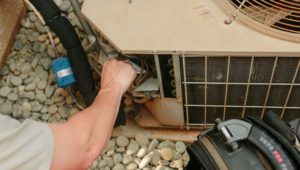Have you heard about Low NOx furnaces? Do you even know what NOx is? Keep reading for some great information about this topic on today’s blog post.
Introduction
I was anxiously awaiting the release of the new S8X1 furnace line. The main reason I was looking forward to it was the 34” cabinet was going to be a lot easier to deal with when replacing a furnace in a home’s closet or attic. But when the rest of the country was getting the new S8 furnaces months before us, Californians had to wait for the release of the Low-NOx models mandated here in California.
We all know what greenhouse gases are and how they negatively affect the world we live in. It’s bad for our health and limits the quality of life for our generation as well as future generations. NOx is just another gas that needs to be reduced to help our planet remain stable and healthy for us humans to exist.
About NOx
NOx is an abbreviation for nitrogen oxides. They’re poisonous and highly reactive gases that are created naturally during lightning strikes and wildfires. Both events include the combustion of oxygen and nitrogen at very high temps. So it makes sense that the combustion that takes place in the gas and oil-fired furnaces we work on would also produce these nitrogen oxides.
The two most dangerous nitrogen oxides are nitric oxide and nitrogen dioxide. Nitric oxide (NO) is formed naturally in the body to help relax and dilate blood vessels in the body. But it’s also a product of high-temperature situations like combustion in a furnace.
Nitrogen dioxides (NO2) are produced by vehicles and cigarette smoke in their own combustion processes, but also when gas and oil furnaces fire up, too. NO2 causes inflammation in the airways, coughing, increased asthma attacks, and just a greater risk of negative breathing problems associated with pollution.
NOx and Greenhouse Gas Production
Although the end-user of the heat being delivered through the ductwork isn’t going to be exposed to the gases that way, the accumulation of it in the immediate area of the combustion chamber and on to the flue pipe adds to the overall production of greenhouse gases generated by humans.
According to the EPA, NOx contributes to respiratory problems, acid rain, smog, elevated algae levels, and global warming. They also say greenhouse gas emissions that come from homes in California represent about 25% of the state’s total emissions.
NOx emissions from a furnace are primarily influenced by the temperature of the flame right at the burner assembly. So, what are manufacturers doing to produce low NOx furnaces? Most efforts to reduce NOx ultimately want to lower the temperature of the flame. Air/fuel mixtures are dialed in, flue gas circulation is enhanced through advanced inducer motors, and ultra-lean premixed burner technologies are all ways to achieve more control over the flame temperature inside the furnace.
Low NOx Furnace Analysis
Performing a combustion analysis will ensure the correct operation of the low NOx furnace once it’s installed. Installers just need to make sure the airflow to the system is properly sized so the static pressures going through the system are right. The installer also needs to make sure the gas valve inlet and outlet pressures are adjusted to the proper settings. These two items alone will help create the recommended temperature rise across the heat exchanger as well as flue gas temperatures exiting the unit.
As I was researching this technology, I was reminded that carbon monoxide, which is another regulated pollutant, and nitrogen oxides are both majorly influenced by the air/fuel ratio directly at the burners. As that ratio increases, the temperature of the flame increases, and NOx levels increase, while CO decreases and vice versa. Having the proper mixture is what Low-NOx is all about.
In most Low-NOx furnaces, the air mixture is sort of delayed to stretch out the chemical reactions happening at the burners. Low NOx furnaces also compensate for seasonal changes in the ambient air, humidity levels, and minor differences in the gas coming from the utility at any given time.
Furnace Start-Up Conditions
To go a little further with the whole CO and NOx discussion, the typical start-up conditions of a furnace on a cold morning means that the metallic chambers are cold, there’s an excess of air to mix at the burners, the air inside the chambers is colder, the gas temperature is initially lower, and, the flue gases themselves are moving more slowly from the heat exchanger and on to the flue pipe. All these conditions create higher levels of carbon monoxide at startup, because the system is not burning as hot. As a result, NOx emissions tend to be lower.
On the opposite side of that, the hotter that furnace gets after being on for several minutes and several times that day contribute to higher levels of NOx and lower levels of carbon monoxide.
When we’re talking about these gases and If I had my choice of which gas to focus on reducing, it would be NOx because of the contribution to acid rain and the breathing problems associated with it. CO has it’s own detriments as well, and I can’t really tell which gas is more harmful at certain concentrations.
I’m not a scientist and my knowledge really only goes so far about this topic. But there are plenty of discussions online about NOx and carbon monoxide.
Low NOx is About the Atmosphere
Remember, Low NOx doesn’t have anything to do with the heat that enters the house through the ducts or the air the homeowner is breathing. It has more to do with what is leaving the flue pipe and entering our atmosphere.
Nitric oxides and dioxides that are produced by flames are part of the poisonous NOx family. The more we can reduce them while still heating our homes effectively is really what it’s all about. And we do this by controlling the temperature of the flame at the burner assembly.
Reaching the 2030 Emissions Goal
Replacing older gas furnaces with Low NOx furnaces will help California reach its 2030 emissions goal. If you want to go even further than staying with a gas furnace, you could switch over to a zero-emission heating solution by replacing that gas furnace with a heat-pump system. It eliminates flue gas, flue pipes, NOx, and still heats your home just the way you like it.
I hope this has helped you understand what the fuss is about what NOx is and why the industry is pushing Low NOx furnaces. If you have any comments or additional information you can share with us down below, please do. We’d love to hear what you have to say about Low NOx furnaces and the drive to reduce greenhouse emissions.
Thanks so much for stopping by and we’ll see you on the next blog!




















